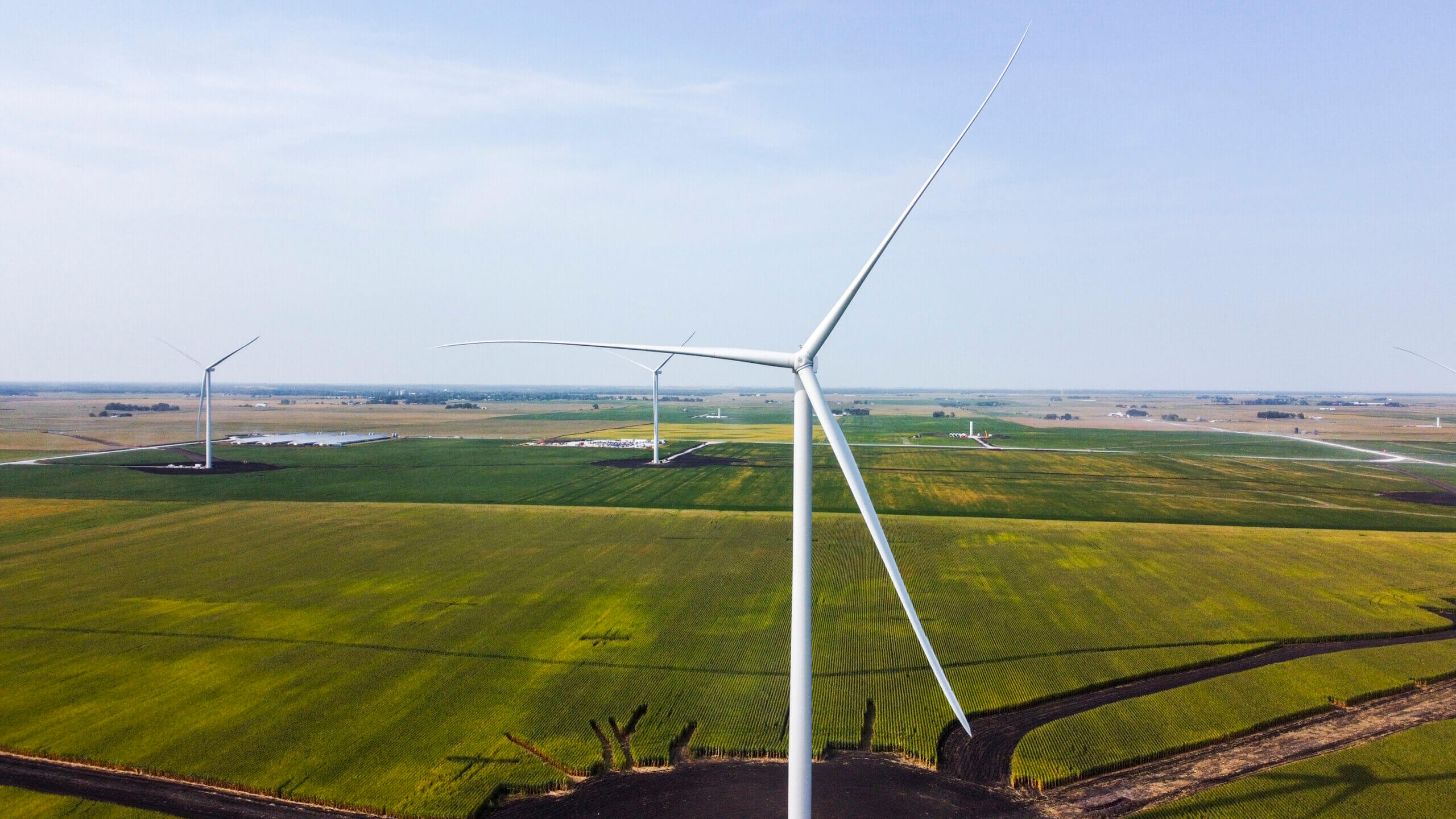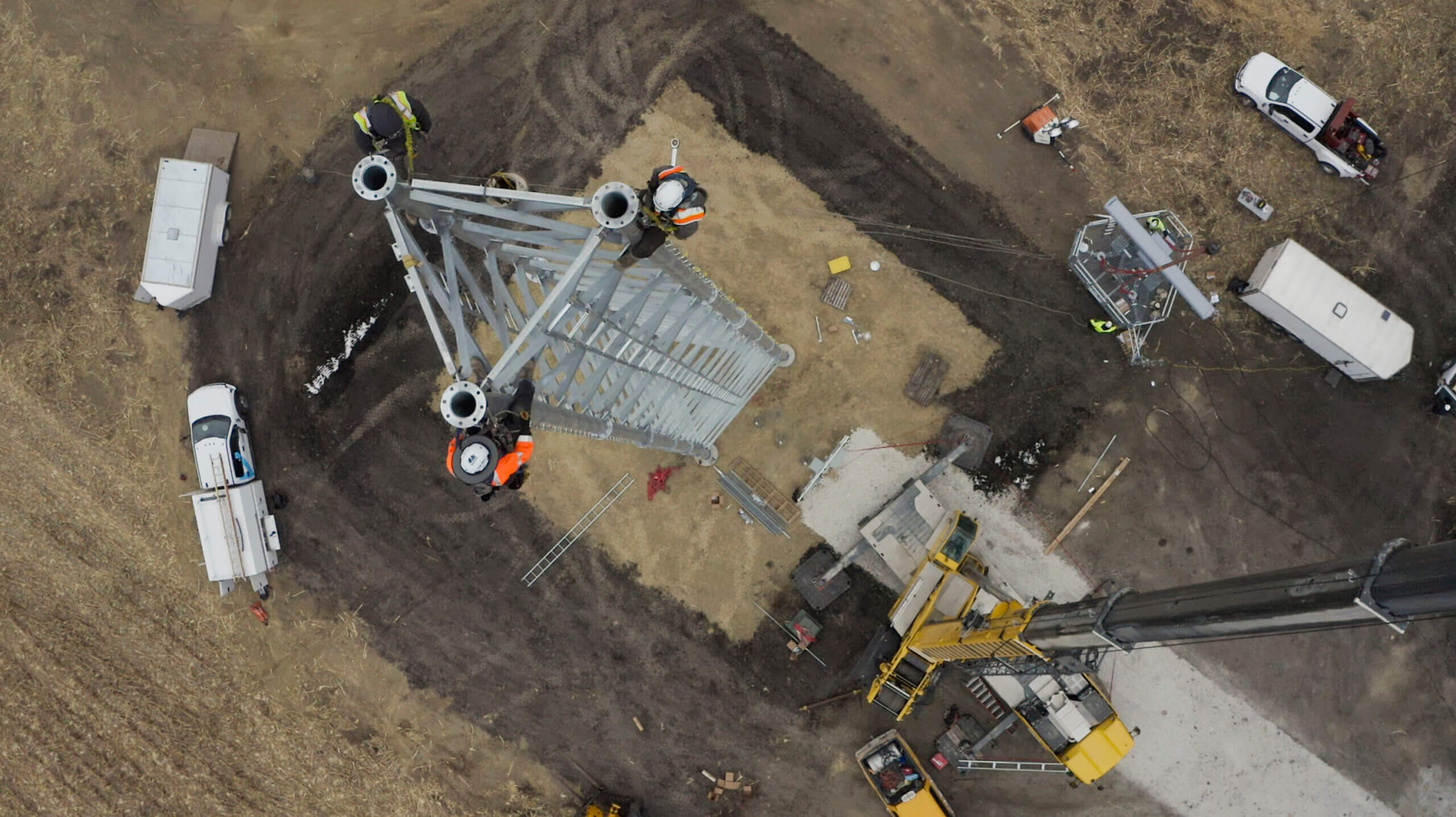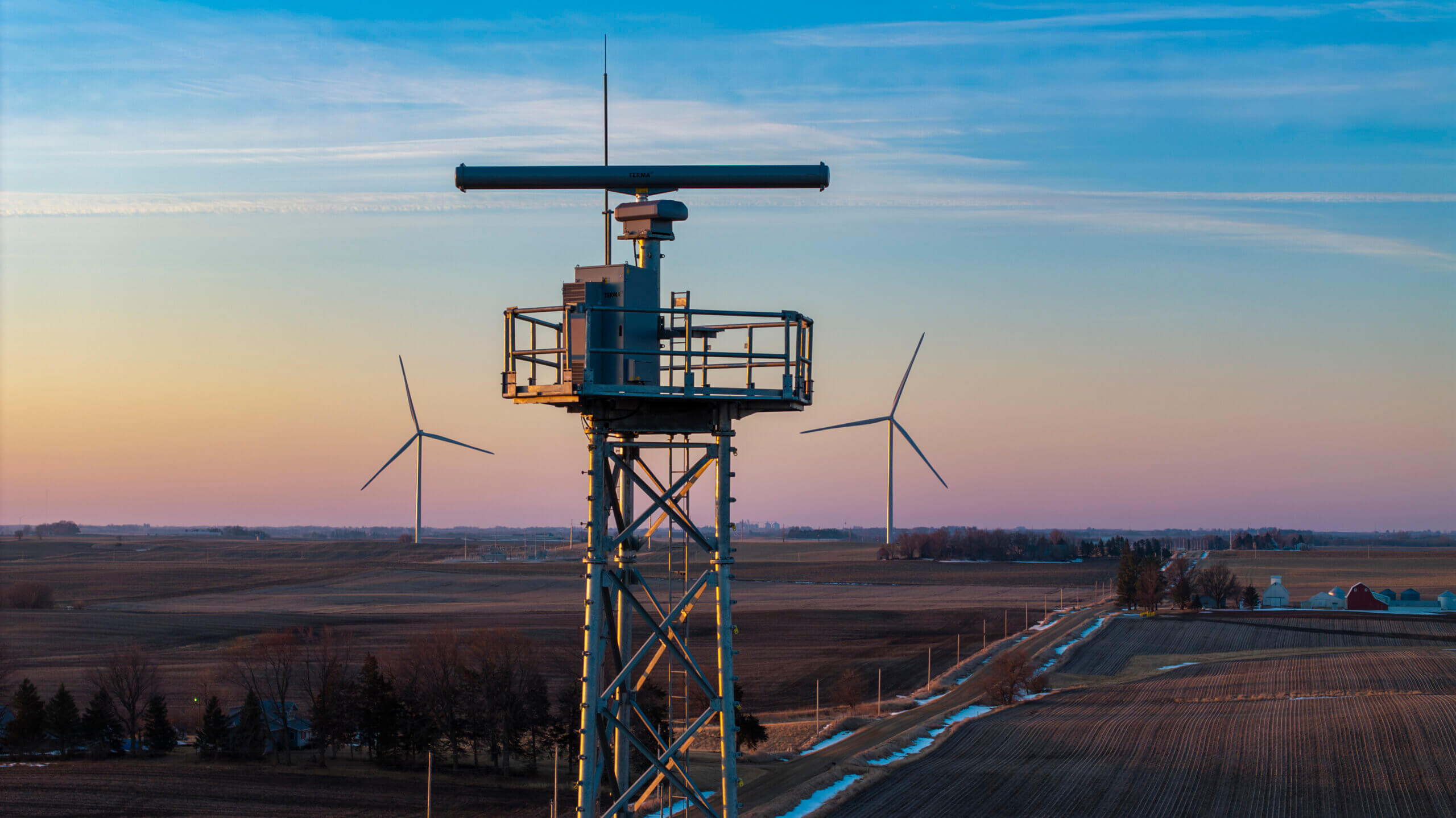Preserving Starry Night Skies
Wind turbine technology is avoiding light pollution to help maintain Iowa’s natural beauty.
In Boone County, Iowa, an hour outside of Des Moines, residents enjoy the benefits of country living: fresh air, acres of fertile farmland, and skies that seem to stretch forever.
“Twenty years ago, I would have characterized this as a sleepy farm community—almost purposefully so,” said Mike Salati, the county’s director of planning and development. “Now, we’re considered an up-and-coming part of Iowa.”
At a time when rural areas across the country face mounting economic challenges, Boone County has managed to prosper by embracing opportunities that help safeguard its character and the way of life that makes it special—such as the wind turbines dotting the northern and western borders of the county.
In many rural communities, this balance between progress and preservation has come into sharp focus with a crucial safety feature of wind farms: the flashing red aviation lights mandated by the Federal Aviation Administration. But now, with emerging technology, Apex’s project communities can enjoy the economic benefits of wind energy during the day while preserving their dark skies at night.
On-Demand Illumination
The energy generated by the county’s wind farm helps provide steady income to landowners, significant tax revenue for the local government, and infrastructure improvements that benefit the entire community. Yet even as residents welcome these positive impacts, they remain protective of the qualities that make rural life unique.
The lights, which flash in a unified cadence to ensure the safety of air traffic, create a visual impact—especially at night. While many concerns surrounding wind energy can be addressed through economic or scientific analysis, this impact presents a qualitative challenge: it’s a change to the rural nightscape that communities value deeply.

Recognizing this issue early on, Apex has been an early adopter of a technology aimed at mitigating this effect, known as an Aircraft Detection Lighting System (ADLS). ADLS uses radar to detect when aircraft approach a wind facility and activates the warning lights only when needed. When no aircraft are present, the lights remain off, preserving starlit skies.
The effect is significant—especially in rural areas where air traffic is limited. “We’ve seen as much as a 98% drop in light pollution with an ADLS system in place,” noted Apex Director of Project Management Lukas Geissbuehler. This means that for the majority of nighttime hours, the turbines remain virtually invisible.
Investing in a Solution
By addressing one of the most common concerns before it becomes a point of contention, Apex streamlines the permitting process and builds stronger relationships with partner communities.
“Implementing a system that delivers impactful benefits to the community but also keeps our skies safe is incredibly important,” said Geissbuehler. “It speaks to our core value of safety, but also to that of professionalism.”
At the heart of Apex’s mission is stewardship for not only the company’s energy facilities, but also the areas in which they’re built. The implementation of ADLS came about as a result of Apex’s responsiveness to direct feedback received from Boone County residents through open houses, public meetings, and one-on-one conversations.
“When the discussions about ADLS began, people immediately recognized it as an answer to their concerns,” recalled Salati. “The people who live near the wind farm or are traveling nearby don’t even notice they’re there.”
Apex’s investment in ADLS stems from listening to community needs—reflecting an ongoing commitment to improving the company’s development approach. While a handful of states have begun requiring this technology for new wind projects, Apex has proactively adopted ADLS, even in areas where it isn’t mandatory.
A Precise Procedure
The benefits of ADLS are clear, but implementation requires careful planning and patience. It can take from three to six months to receive the permits and approvals required to use the technology, which must then be integrated with the wind farm after the turbines are already erected.

“The installation process involves several sequenced steps,” Geissbuehler said. “First, the turbines and radar must be installed and then commissioned concurrently. From there, we can start commissioning the ADLS system.”
The team must first ensure the turbines are communicating with the ADLS controller—as part of the commissioning process, engineers track flights passing through the project area to ensure the lights activate properly when needed. Throughout installation and commissioning, residents still see the nighttime lights—necessary to ensure the safety of the system. But this temporary inconvenience gives way to a lasting improvement: communities regain their night skies while maintaining the highest standards of aviation safety and enjoying the economic impacts of a meaningful new revenue source.
Setting a New Standard
The implementation of ADLS at Apex’s wind facilities represents more than just a technical solution to a specific challenge—it shows how meaningful community engagement can result in well-designed projects that prioritize local character alongside the bottom line.
As wind energy continues to expand across rural America, bringing economic opportunities to areas like Boone County, solutions like ADLS demonstrate that development can occur while respecting what residents value most.
This technology allows facilities to generate homegrown power and significant economic benefits around the clock—even while virtually disappearing from the landscape at night.
For Apex, this approach reflects a broader commitment to responsible development—listening to community concerns and investing in solutions that address them directly. It’s just one example of how innovation can help renewable energy projects become true assets to the communities that host them.
“We’re protecting safety needs, and we’re being innovative in how we do so,” Salati said, conclusively. “This solution benefits everybody.”

